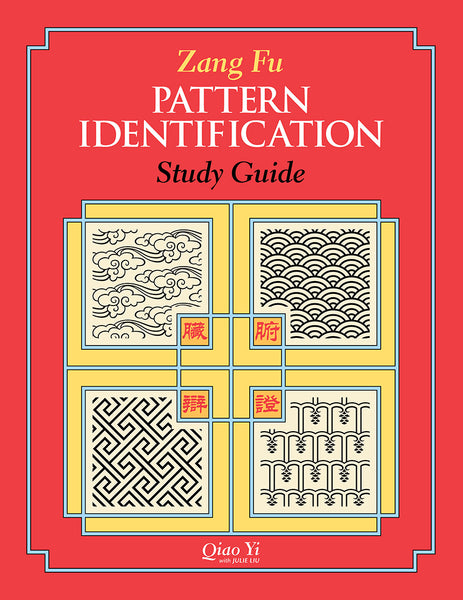
Smyth-sewn softcover
ISBN: 0-939616-64-5
978-0-939616-64-0
Traditional Chinese Medicine Diagnosis Study Guide
- PDF This eBook is available exclusively as a PDF and is readable with the free Javelin PDF Reader, accessible from your Account page after purchase. See eBook FAQs for details.
Description
Diagnosis in traditional Chinese medicine (TCM) is the process of examining the body to diagnose disease and differentiate patterns under the guidance of the fundamental theories of TCM. It is a bridge that connects the basics of TCM with all branches of clinical medicine and includes inspecting the symptoms or manifestations, analyzing the changes, understanding the pathomechanisms, and predicting the transformation of diseases.
TCM diagnosis consists of two major areas of study, 'examination and testing' (zhên) and 'decision and judgment' (duàn). Examination and testing techniques are used to collect information from the patient. Decision and judgment uses this information, which is sorted, analyzed, synthesized, and reasoned on the basis of TCM theory.
This book is organized around the 'four pillars' of TCM diagnosis: inspection, inquiry, listening and smelling, and palpation. In this text, each aspect is explained in a clear and systematic manner, with generous use of tables and illustrations. This is followed by a series of review questions for deeper understanding.
A comprehensive self-examination consisting of 200 multiple choice questions, with a separate key to the answers, tests the reader's understanding of the important points of each aspect of diagnosis. These questions, many of which are presented in case study format, will help students prepare for the board exams.
Contents
Introduction
The Main Studies in TCM Diagnosis
The Principles of TCM Diagnosis
CHAPTER ONE: Inspection
- Inspection of the Whole Body
- One: Inspection of Spirit
- Two: Inspection of Facial Complexion
- Three: Inspection of Body Appearance
- Inspection of Local Areas
- One: Inspection of Eyes
- Two: Inspection of Ears and Nose
- Three: Inspection of Teeth, Gums, and Throat
- Four: Inspection of Lips and Mouth
- Five: Inspection of Skin, Hair, and Nails
- Infant Finger Examination
- Inspection of Excreta and Secretions
- Tongue Inspection
- Questions and Answers for Deeper Insight into Inspection
CHAPTER TWO: Listening (Auscultation) and Smelling (Olfaction)
- Listening (Auscultation)
- Smelling (Olfaction)
- Questions and Answers for Deeper Insight into Smelling and Listening
CHAPTER THREE: Inquiry
- Introduction
- Scope of Inquiry
- Present Symptoms and the Ten Questions
- One: Chills and Fever
- Two: Sweating
- Three: Pain
- Four: Symptoms of the Head and Body
- Five: Symptoms of Ears and Eyes
- Six: Inquiring about Dietary Information
- Seven: Inquiry into Defecation and Urination
- Eight: Inquiry into Sleep
- Nine: Inquiry into Women’s Conditions
- Ten: Inquiry for Children
- Questions and Answers for Deeper Insight into Inquiry
CHAPTER FOUR: Palpation
- Pulse Examination
- One: Introduction
- Two: Normal Pulse (Physiological Pulse)
- Three: Abnormal Pulse (Pathological Pulse)
- Four: Twenty-Nine Common Pathological Pulses
- Five: Distinguishing Among Pathological Pulses
- Six: Female Pulses
- Palpation
- One: Methods of Body Palpation
- Two: The Scope of Palpation
Questions and Answers for Deeper Insight into Palpation
TCM Diagnosis Comprehensive Examination
Answer Key: TCM Diagnosis Comprehensive Examination
Bibliography
Premodern Texts
Contemporary Texts
Authors
Peer-Review Committee
Reviews
"Qiao Yi and Al Stone, both veteran educators, have risen to the task of explaining TCM diagnosis in both overview and its intricate details. This Study Guide goes beyond simply translating and reiterating what has already been written in other texts by showing diagnosis as an interactive process with zang-fu and TCM theory. The authors’ years of experience in teaching this material—which has been peer reviewed by leading scholars of Chinese medicine—is reflected in both the content and its presentation. More than just a dry compilation of facts, this book clarifies many of the ambiguities left by other TCM texts. Highly recommended for both beginners and experienced practitioners."
—Douglas Eisenstark L.Ac., Instructor at Yo San University and Emperor's College of TCM



